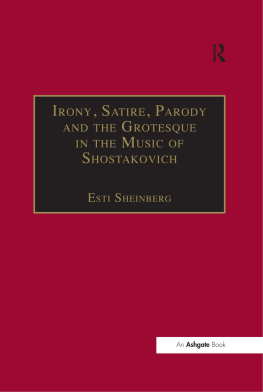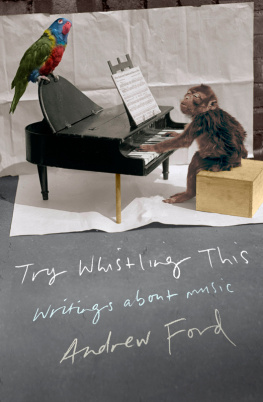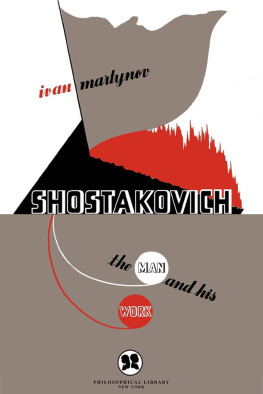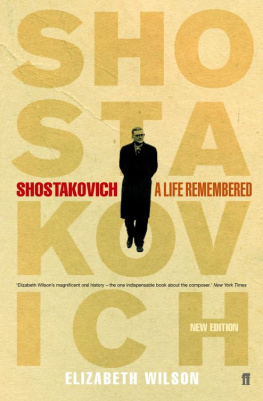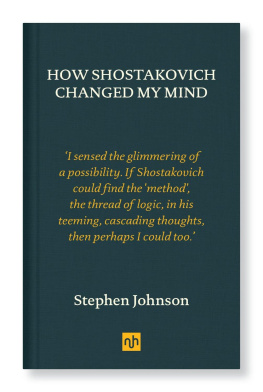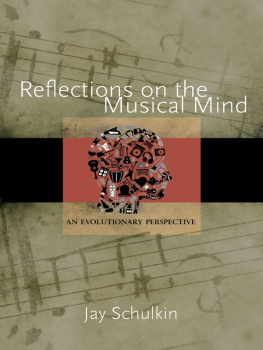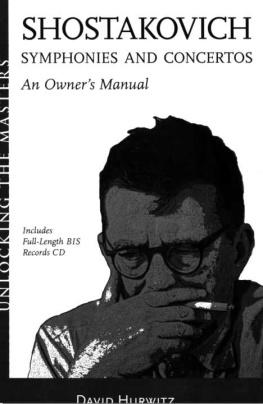Irony, Satire, Parody and the Grotesque in the Music of Shostakovich
To the memory of my grandfather, who gave me his sense of humour
Irony, Satire, Parody and the Grotesque in the Music of Shostakovich
A Theory of Musical Incongruities
ESTI SHEINBERG
music engravings by
OFER SHEINBERG
First published 2000 by Ashgate Publishing
Published 2016 by Routledge
2 Park Square, Milton Park, Abingdon, Oxon OX14 4RN
711 Third Avenue, New York, NY 10017, USA
Routledge is an imprint of the Taylor & Francis Group, an informa business
Copyright Esti Sheinberg, 2000
Esti Sheinberg has asserted her moral right under the Copyright, Designs and Patents Act, 1988, to be identified as the author of this work.
All rights reserved. No part of this book may be reprinted or reproduced or utilised in any form or by any electronic, mechanical, or other means, now known or hereafter invented, including photocopying and recording, or in any information storage or retrieval system, without permission in writing from the publishers.
Notice:
Product or corporate names may be trademarks or registered trademarks, and are used only for identification and explanation without intent to infringe.
British Library Cataloguing in Publication Data
Sheinberg, Esti
Irony, Satire, parody and the Grotesque in the Music of Shostakovich:
A Theory of Musical Incongruities
1. Shostakovich, D. (Dmitrii), 19061975Criticism and interpretation.
I. Title.
780.92
US Library of Congress Cataloging in Publication Data
Sheinberg, Esti, 1954
Irony, Satire, Parody and the Grotesque in the Music of Shostakovich:
A Theory of Musical Incongruities /Esti Sheinberg; musical engravings
Ofer Sheinberg
p. cm.
Includes bibliographical references and index.
1. Shostakovich, Dmitr Dmitrievich, 19061975Humor. 2. Humor in Music
3. MusicSemiotics. I. Title.
ML410.S53S45 2000
780.92dc21 00041600
ISBN 13: 978-0-7546-0226-2 (hbk)
Contents
Guide
| 12.11 | Picasso, Harlequin Leaning on His Elbow (1927) |
The music of Dmitri Shostakovich has typically been regarded as containing a semantic message, which reflected the political environment in which he composed. Such interpretations inadvertently relegated his works to little more than political propaganda, disregarding not only his artistic skill but the non-political purport of his music. Other studies focused on the music alone, ignoring the multi-dimensional nature of his works. Both approaches neglect an essential point, fundamental to the understanding of the traditional Russian perception of the arts. According to this tradition, an interrelationship between artistic technique and ideological content is the main aesthetic criterion.
This study views music as a form that purports semantic content. As such, it correlates with other, mainly visual and verbal, forms of expression and communication. On the basis of this premise, this study investigates the musical manifestation of four semantic modes irony, satire, parody and the grotesque that are related to the comic. These four modes are analysed as specific cases of the overall semantic structure of ambiguity. Subsequently, a correlative structure of musical ambiguity is presented. Thus the correlations between the musical, visual and verbal modes of expression are made principally on the basis of structural parallelism.
Within the greater semiotic web, music has a continuous interrelationship with other cultural units. In order to understand this interrelationship, some appreciation of those cultural units is needed. Therefore irony, satire, parody and the grotesque are explored as philosophical approaches, as creative principles, and as artistic techniques. Special attention is given to particulars that are characteristic of the Russian culture. Therefore, musical examples that correlate with the above modes and their techniques are analysed on the basis of their cultural associations and characteristics. These analyses are then compared with parallel examples from the works of Dmitri Shostakovich, thus clarifying some formerly unacknowledged compositional techniques and characteristics of his music.
The theoretical basis of this book is interdisciplinary: while dealing with Russian music and Russian culture, its core lies in the more general field of musical semiotics.
Since the completion of its first version, in 1997, several related books have appeared, three of which are central to its field of study: these are Richard Taruskin's Defining Russia Musically (1997), Laurel Fay's recent biography of Shostakovich (1999), and David Lidov's Elements of Semiotics (1999). Although I do not directly refer to them in the text, I don't think that any of them contradicts my theories and analyses, as presented here. Moreover, they seem to correlate together into a fuller and more comprehensive picture of musical semiotics in general and the music of Shostakovich in particular.
The book draws its terminology and concepts from a variety of sources. However, the most significant single source for its main theoretical basis is to be found in Robert Hatten's Musical Meaning in Beethoven (1994), to which I am greatly indebted for the concept of musical correlation, which became central to my own thought. The ideas I present are meant to continue and develop Hatten's concepts, and perhaps offer some new insights into their application to music in general and to the area of musical ambiguity in particular.
Beyond the inspiration I drew from his writings, I am deeply grateful to Robert Hatten for long and fruitful discussions over the e-mail and for his scrupulous reading of the first version of my typescript. Many of the improvements made from the first version are due to his enlightening comments and unforgiving scrutiny, and for both I am fully indebted and deeply grateful.
Likewise, I would like to express my thanks to Raymond Monelle for his good advice and mind-regenerating discussions, and to Eero Tarasti, whose work introduced me to the field of musical semiotics, for his constant intellectual support. I am also grateful to Stuart Campbell for his useful comments and his help with the translations from Russian, and to Malcolm Hamrick Brown for stimulating correspondence over the e-mail concerning the current state of research on Shostakovich.
My warmest thanks to my son Ofer, who copied and designed all the music examples in this book. I am also indebted to him for his useful comments, and his admirable patience with my many last-minute modifications.
I am indebted to the University of Edinburgh for providing me with financial support to accomplish some of the more complicated technicalities involved in the production of this book, and deeply grateful to my colleagues who covered my teaching duties during the time I was preparing it for publication.
An interdisciplinary research must involve more than one person, and this research is no exception. Many people have contributed to the final result, in various fields of knowledge and in a variety of ways: recommending a particular source that I had missed, providing hard-to-obtain material or correcting my awkward translations from Russian, German and French sources. Others granted me valuable time in discussions that brought up new ideas and refined older ones. The serendipity of these encounters shed sparks of light on a work that otherwise is often quite lonely and secluded.

